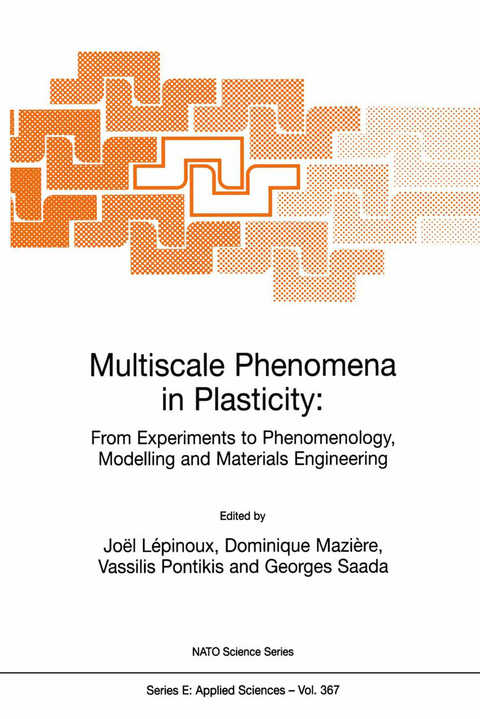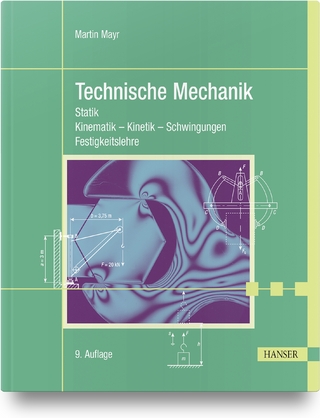
Multiscale Phenomena in Plasticity: From Experiments to Phenomenology, Modelling and Materials Engineering
Springer (Verlag)
978-0-7923-6252-4 (ISBN)
A profusion of research and results on the mechanical behaviour of crystalline solids has followed the discovery of dislocations in the early thirties. This trend has been enhanced by the development of powerful experimental techniques. particularly X ray diffraction. transmission and scanning electron microscopy. microanalysis. The technological advancement has given rise to the study of various and complex materials. not to speak of those recently invented. whose mechanical properties need to be mastered. either for their lise as structural materials. or more simply for detenllining their fonnability processes. As is often the case this fast growth has been diverted both by the burial of early fundamental results which are rediscovered more or less accurately. and by the too fast publication of inaccurate results. which propagate widely. and are accepted without criticism. Examples of these statements abound. and will not be quoted here for the sake of dispassionateness. Understanding the mechanical properties of materials implies the use of various experimental techniques. combined with a good theoretical knowledge of elasticity. thermodynamics and solid state physics. The recent development of various computer techniques (simulation. ab initio calculations) has added to the difficulty of gathering the experimental information. and mastering the theoretical understanding. No laboratory is equipped with all the possible experimental settings. almost no scientist masters all this theoretical kno/vledge. Therefore. cooperation between scientists is needed more than even before.
Historical Aspects of an Encounter and of a Longlived Relation-Ship.- Historical Overview.- Mechanisms of Crystals Plasticity.- From the Physics of Plastic Flow to Constitutive Equations.- Thermal Activation in Plastic Deformation.- Multiplication, mobility and exhaustion of dislocations.- High Temperature Deformation.- Fatigue and associated microstructural aspects: Atomistically Based Multiscale Modelling.- Mechanical Properties of Solid Solutions and Related Topics.- Possible Mechanisms for Dislocations Multiplication at, or Close to, a Crack Tip.- Deformation of Thin Films and Multilayers.- A Dislocation-Based Model for Variant Selection During the ?-to-? Transformation of Hot Rolled Austenite.- Experimental Techniques: Recent Developments.- Deformation and Surface Morphology.- Determination of Internal Stresses.- In Situ Straining Experiments in T.E.M.: Application to the Study of High Performance Materials.- Analysis of the Structure and Chemistry of Crystalline Defects by TEM.- Interfacial and Junction Line Defect Analysis for Plasticity Investigations.- Electron Microscopy Studies of Defects in Deformed Hexagonal Materials.- Conjunction of Experimental Approaches: The Relevant Choice.- Microscopic and Mesoscopic Modelling.- Electronic Structure: From Bonding to Mechanical Properties.- Connecting the Micro to the Mesoscale: Review and Specific Examples.- An Introduction to the Molecular-Dynamics Simulation of Materials.- Cross Slip in the Face Centred Cubic Structure: An Atomistic Approach.- Elemental Mechanisms of Plasticity: A Numerical Study at the Atomistic Scale.- Plasticity of Metals During Cold Working.- Atypical Plastic Properties of Ni3Al Alloys Studied by Dislocation Dynamics Simulations.- Nanoindentation: From Experiments to 3D Simulations.-Constitutive Modelling of Plastic Flow.- Modelling Brittle-Ductile Transitions.- Environmental Effects.- Hydrogen Effects on Plasticity.- Mechanism of Liquid Metal Embrittlement by Simple Experiments: From Atomistics to Life-Time.- Grain Boundary Embrittlement by Liquid Metals.- From Anisotropy of Grain Boundary Segregation to Grain Boundary Design for Polycristals.- Stress Corrosion Cracking: An Electrochemist Point of View.- Plastic Flow of Amorphous Materials During Ion Bombardment.- Materials.- Materials and Process Selection for Structural Applications.- The Flow Strength Anomaly in Metals and Intermetallic Corn-Pounds.- Dislocation Plasticity in Ceramic Materials.- Superplastic Behaviour of Micro- and Nanograined Materials.- Deformation of Minerals, Applications in Geophysics.- List of Speakers.- Partners / Sponsors.
| Erscheint lt. Verlag | 31.5.2000 |
|---|---|
| Reihe/Serie | NATO Science Series E ; 367 |
| Zusatzinfo | 177 Illustrations, black and white; XI, 529 p. 177 illus. |
| Verlagsort | Dordrecht |
| Sprache | englisch |
| Maße | 160 x 240 mm |
| Themenwelt | Naturwissenschaften ► Physik / Astronomie ► Mechanik |
| Technik ► Maschinenbau | |
| ISBN-10 | 0-7923-6252-7 / 0792362527 |
| ISBN-13 | 978-0-7923-6252-4 / 9780792362524 |
| Zustand | Neuware |
| Haben Sie eine Frage zum Produkt? |
aus dem Bereich


